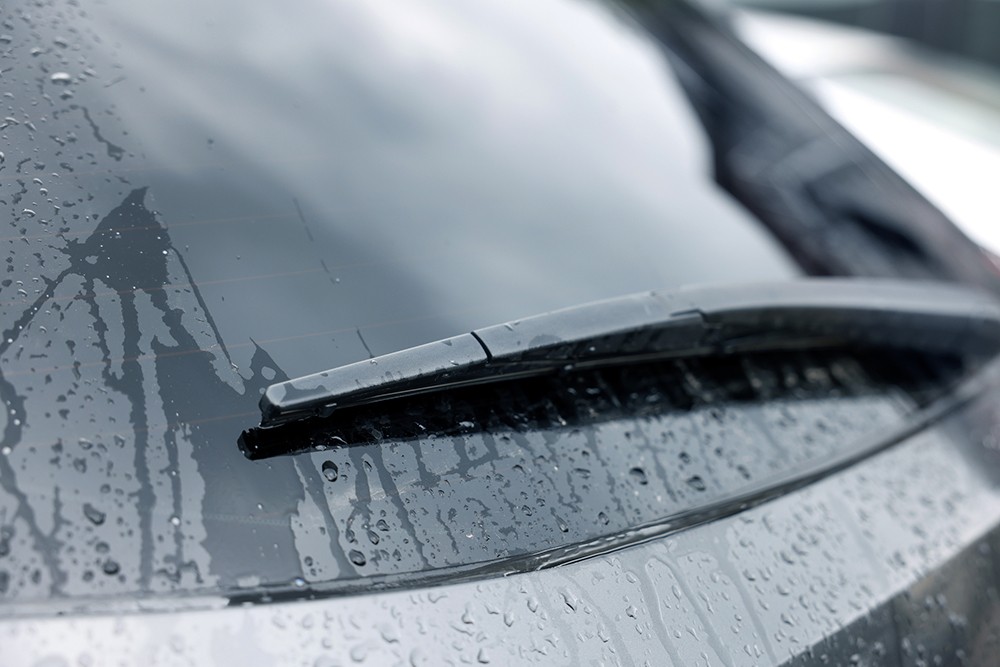
As the weather starts to turn warmer and thoughts of spring road trips come to mind, it’s time to take a look at your wiper blades.
Heavy-duty winter blades are perfect for snow and colder weather, but once temperatures begin to rise and rain hits your windshield, a different type of blade is required.
Choosing the right blade design
Winter wiper blades are constructed of thick rubber that is perfect to endure the cold and knock snow off your windshield. However, rain and milder weather need a different approach.
In contrast, spring and summer blades are made of lighter, more flexible components, and stay supple in warmer temperatures. They can easily slice through the water on your glass, keeping contact with the windshield for optimal performance. In contrast, winter blades often crack and become rigid when subjected to sun and heat.
Multiple styles of blades are available to choose from that work better to cut through the raindrops that come with spring.
“There’s an entire aisle of choices,” says Lori Bachman of Continental Automotive. “It can be a bit confusing.”
Beam wiper blades
Beam blades are a style of wiper that is not attached to an encompassing metal frame like conventional wiper blades. This allows the wipers to be more flexible and curve better to your windshield. With greater contact on the glass, they will displace water more effectively.
Also, beam wiper blades can create less wind resistance. As you are driving, some blades can lift off your windshield and not be as effective in wiping away the rain, which can lead to an obscured view for the driver.
Because of the lower profile that beam blades have, it cuts down on this lifting and ensures better surface contact.
Hybrid blades
Hybrid styles of blades provide a happy medium. They are still lightweight like beams but have some metal support. This gives them a bit more sturdiness, but they are still curved and will make good contact with the glass.
“In hot, sunny weather rubber blades tend to get soft,” says Jeffrey Ross of Continental Automotive. “They eventually may dry out and will no longer be able to clean your windshield, leaving those telltale smear marks.”
Even though spring blades are designed for rain and warmer driving, they can still be subject to the elements. Exposure to the sun can leach resins out of blades and make them brittle.
Important wiper considerations
While choosing wiper blades, consider silicone or synthetic blends instead of rubber. Often silicone blades will be more pliable in the elements, which increases contact with the glass and they will work better at removing water.
Ross also warns drivers to invest in quality wiper blades. While the sun may be out, temperatures in spring can vary and you’ll still have cold days.
“Inexpensive all-rubber blades can get really stiff in cold weather and you start to get chattering since they can’t make good contact with the contour of your windshield,” Ross explains. “When that happens, they will not be able to effectively clear in rain or snow.
Other signs of worn-out blades can include rubbing, scraping, vibrations and gaps as the arm moves across your windshield. Streaks on the glass indicate poor contact with the surface.
“The problems are visibility and overall driver awareness,” Ross says about driving with worn-out blades. “I change mine out at least once a year since I live in an area with four distinct seasons and want to ensure I have the best visibility at all times."
Extend life, performance of wiper blades
- Do your wiper blades rub, scrape, vibrate as the arm moves across your windshield? If so, replace them before getting permanent damage to your glass surfaces.
- Consider replacing your blades in early spring to avoid smearing during March and April rains.
- Do you see streaks? This usually indicates the blade is making poor contact with the surface and should be replaced.
- Don’t forget rear window blades. If you haven’t replaced them in a year, they likely are hardened, frayed and ineffective.
- Consider silicone or synthetic blends instead of rubber. Often silicone blades will be more pliable in the elements, which increases contact with the glass and they will work better at removing water.
- Hybrid styles are designed for warm weather driving. They are lightweight and metal support.
- Beam blades are flexible and curved to suit your windshield, providing excellent performance for rainy climates.
- Winter wiper blades are constructed of thick rubber designed for cold climates and snow removal. Swap them for blades designed for hot summer days.
- Keep wiper blades clean. After a rain, pieces of debris, plant parts and even bugs can get stuck in the blade and keep it from performing properly.
- Watch out for significant rust spots that hint that the metal parts are beginning to age and may begin to fail.
- Keep your windshield glass clean. If it has debris, liquids or other things stuck to it, the blades won’t work properly. Plus, when it does rain, it can cause a swampy mess on the glass. Use a window cleaner designed for automobile glass to prevent streaks and avoid damage to window tint film.
- Use rain repellent to improve window visibility and help prevent beads of water from drying on surfaces. Rain repellent products also help wipers do their job better.
- If you find it difficult to remember to swap your blades out, consider making it part of your seasonal check-up. Make the change from winter to spring wiper blades at the same time you change your snow tires and other preparations. Consider making it a twice a year habit to make your changes to and from your car’s warmer weather mode.
Copyright © 2024 by Sensible Driver. All rights reserved.